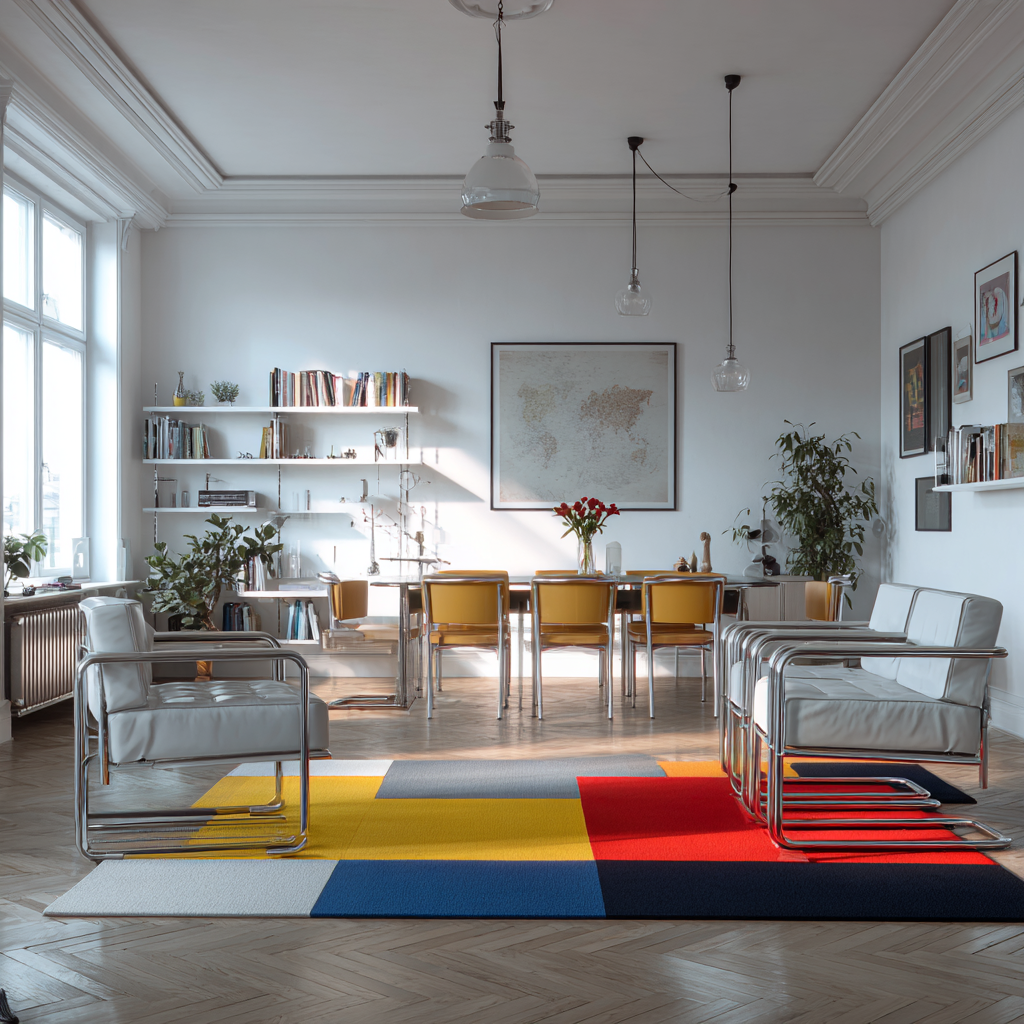Historical Architecture - Design Movements That Shaped Our Homes

Some of the most beautiful interiors we see today draw their inspiration from architectural movements that began decades or even centuries ago. From the flowing curves of Art Nouveau to the bold concrete statements of Brutalism, these historical styles continue to influence how we design and decorate our homes. Let's explore ten pivotal movements that transformed interior design.
1. Palladian Style: Classical Symmetry Perfected (16th century)
Where it comes from: Andrea Palladio's 16th century Italian villas inspired centuries of grand country houses. This style represents mathematical perfection—every proportion calculated, every element balanced in classical harmony.
Key elements: Perfect symmetry, classical columns, neutral palettes, marble accents, formal arrangements, grand proportions.

2. Renaissance Revival: Palazzo Grandeur (19th century revival of 16th century style)
Where it comes from: 19th century fascination with Italian Renaissance palazzos brought ornate ceiling work, rich tapestries, and classical proportions to Victorian homes. This style represented cultural sophistication and worldly knowledge.
Key elements: Ornate ceiling work, rich tapestries, classical proportions, dark wood furniture, Renaissance-inspired art, jewel-toned fabrics

3. Gothic Revival: Medieval Drama for Modern Souls (19th century)
Where it comes from: 19th century romantics yearned for medieval grandeur, creating Gothic Revival as an antidote to industrial practicality. Think Victorian parlours meets cathedral atmosphere—dramatic, mysterious, deeply atmospheric.
Key elements: Pointed arches, rich velvets, dark woods, stained glass, ornate metalwork, deep jewel tones, dramatic lighting
4.Art Nouveau: Nature's Poetry in Interior Form (Late 19th century)
Where it comes from: Born in late 19th century Europe as a rebellion against industrial mass production, Art Nouveau celebrated the organic world through sinuous lines and natural motifs. Think Parisian Metro entrances, Tiffany lamps, and Glasgow's Mackintosh roses.
Key elements: Flowing curves, botanical patterns, stained glass, wrought ironwork, asymmetrical layouts, jewel tones

5. Beaux-Arts: Grand Scale Elegance (Late 19th century)
Where it comes from: Late 19th century French academy training that influenced grand public buildings and luxury homes. Think Gilded Age mansions, opera houses, and the belief that architecture should inspire awe through classical grandeur.
Key elements: Grand scale, classical details, rich materials, symmetrical layouts, ornate moldings, marble and gilt, formal arrangements
6. Arts and Crafts: Handmade Beauty in Rebellion (1880s-1920s)
Where it comes from: A passionate rebellion against industrial mass production, the Arts and Crafts movement celebrated handmade craftsmanship and honest materials. Led by figures like William Morris, this movement believed beautiful, well-made objects could improve society and reconnect us with authentic making.
Key elements: Handcrafted furniture, natural materials, geometric patterns, built-in woodwork, earthy colour palettes, decorative tiles, stained glass, emphasis on craftsmanship
Prompt: Arts and Crafts living room with handcrafted oak furniture, geometric patterned textiles, built-in wooden bookcases, decorative ceramic tiles, stained glass accents, earthy greens and browns, craftsman style interior
Caption: "Honest craft: where every piece tells the story of its making."

7.Bauhaus: The Revolution of Form Following Function (1919-1933)
Where it comes from: Germany's Bauhaus school (1919-1933) stripped away Victorian excess, believing beautiful design should be accessible to everyone. Their "form follows function" philosophy still influences everything from IKEA to Apple.
Key elements: Clean geometric lines, primary colours with black and white, tubular steel furniture, sans-serif typography, modular design

8. De Stijl: Pure Geometric Harmony (1917-1932)
Where it comes from: Dutch movement that reduced design to essential elements—straight lines, right angles and primary colours. Mondrian's paintings translated into living spaces that felt revolutionary and pure.
Key elements: Primary colours (red, blue, yellow), black lines on white, geometric furniture, asymmetrical balance, minimal ornamentation

9. Streamline Moderne: Art Deco's Sleek Evolution (1930s)
Where it comes from: 1930s America's interpretation of speed and progress—inspired by ocean liners, trains, and aeroplanes. This style celebrated horizontal movement and machine-age aesthetics during the Depression era.
Key elements: Horizontal emphasis, curved corners, chrome details, nautical influences, smooth surfaces, monochromatic schemes, built-in furniture
10. Brutalist Interiors: Bold Concrete Poetry (1950s-1970s)
Where it comes from: 1950s-70s architectural movement that celebrated raw concrete (béton brut). Originally designed for post-war social housing, Brutalism's honest materials and dramatic forms are experiencing a sophisticated revival.
Key elements: Exposed concrete, angular geometries, monochromatic palettes, dramatic lighting, sculptural furniture, raw textures

These historical movements remind us that great design is timeless. Whether you're drawn to the mathematical perfection of Palladian symmetry or the honest materials of Brutalism, each style offers something unique for modern homes. The key is understanding what speaks to you and adapting these classic principles for contemporary living.



